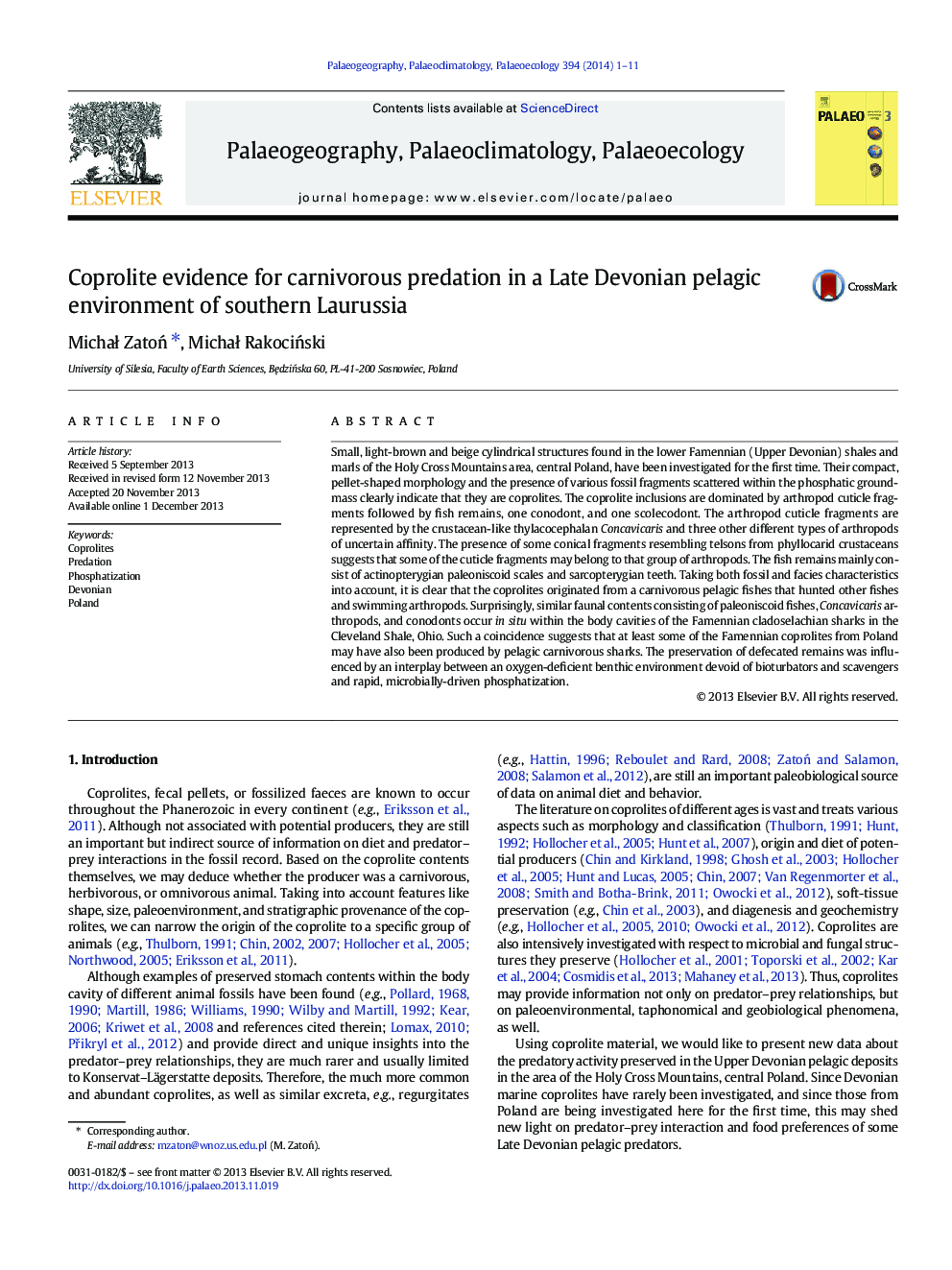| کد مقاله | کد نشریه | سال انتشار | مقاله انگلیسی | نسخه تمام متن |
|---|---|---|---|---|
| 4466328 | 1622196 | 2014 | 11 صفحه PDF | دانلود رایگان |

• Lower Famennian coprolites from marine deposits of Poland were investigated.
• All contain fragmented cuticles of arthropods and fish remains.
• The apparent predators were fish.
• Contents remind those from cladoselachian stomachs from the Cleveland Shale, Ohio.
• Phosphatization of coprolites was induced by microbes.
Small, light-brown and beige cylindrical structures found in the lower Famennian (Upper Devonian) shales and marls of the Holy Cross Mountains area, central Poland, have been investigated for the first time. Their compact, pellet-shaped morphology and the presence of various fossil fragments scattered within the phosphatic groundmass clearly indicate that they are coprolites. The coprolite inclusions are dominated by arthropod cuticle fragments followed by fish remains, one conodont, and one scolecodont. The arthropod cuticle fragments are represented by the crustacean-like thylacocephalan Concavicaris and three other different types of arthropods of uncertain affinity. The presence of some conical fragments resembling telsons from phyllocarid crustaceans suggests that some of the cuticle fragments may belong to that group of arthropods. The fish remains mainly consist of actinopterygian paleoniscoid scales and sarcopterygian teeth. Taking both fossil and facies characteristics into account, it is clear that the coprolites originated from a carnivorous pelagic fishes that hunted other fishes and swimming arthropods. Surprisingly, similar faunal contents consisting of paleoniscoid fishes, Concavicaris arthropods, and conodonts occur in situ within the body cavities of the Famennian cladoselachian sharks in the Cleveland Shale, Ohio. Such a coincidence suggests that at least some of the Famennian coprolites from Poland may have also been produced by pelagic carnivorous sharks. The preservation of defecated remains was influenced by an interplay between an oxygen-deficient benthic environment devoid of bioturbators and scavengers and rapid, microbially-driven phosphatization.
Journal: Palaeogeography, Palaeoclimatology, Palaeoecology - Volume 394, 15 January 2014, Pages 1–11